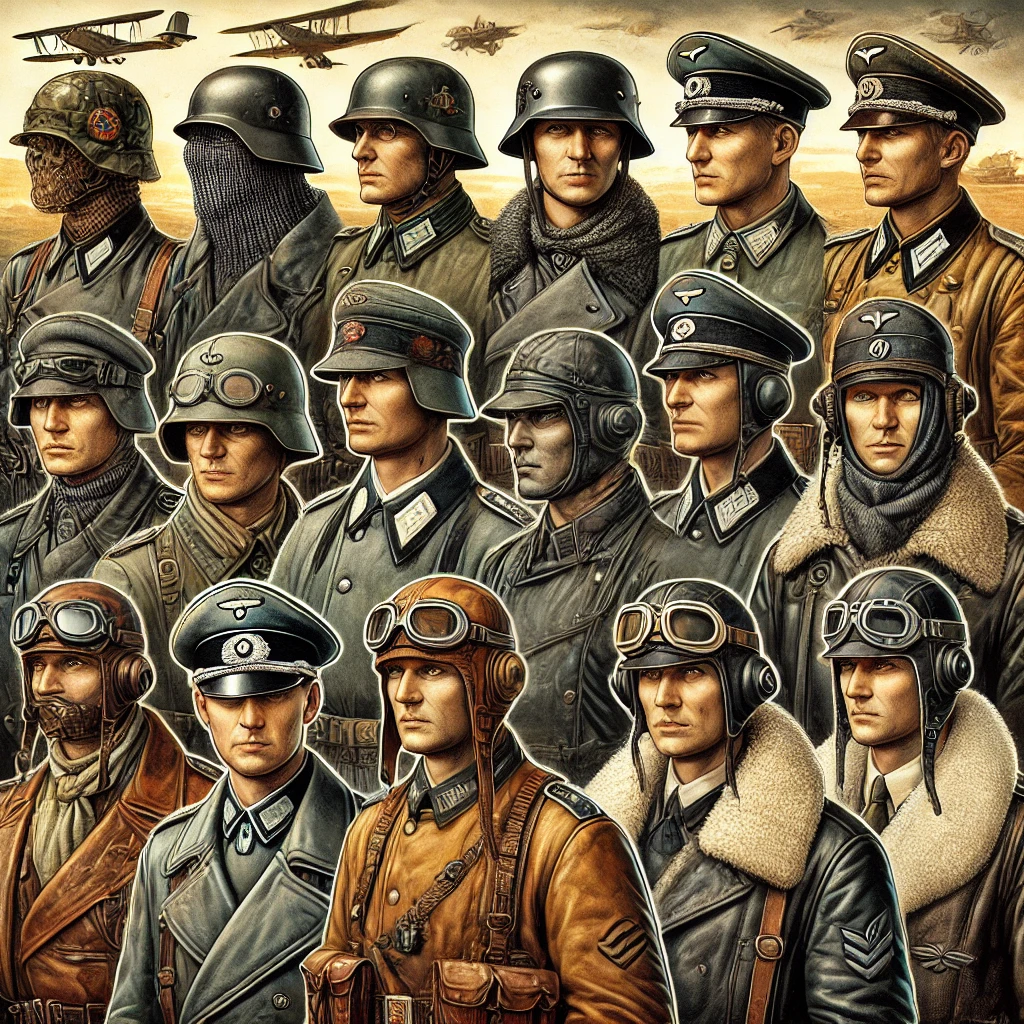
German WWI Uniform Types: Helmets, Hats, and Aviator Jackets
Published on Feb 28, 2025
German WWI Uniform Types: Helmets, Hats, and Aviator Jackets
Introduction
During World War I, the German Army was renowned for its distinctive and practical uniforms. Each uniform piece played a crucial role in soldier protection, identity, and battlefield efficiency, from the iconic Stahlhelm (steel helmet) to the stylish yet functional aviator jackets and WW1 German hats. This article explores various German WWI uniform types, highlighting their significance and evolution.
The Iconic WW1 German Stahlhelm
One of the most recognized symbols of World War I is the German Stahlhelm. Introduced in 1916 to replace the less effective Pickelhaube (spiked helmet), the Stahlhelm provided superior protection against shrapnel and bullets.
Features of the WW1 German Stahlhelm:
- Material: Made of pressed steel, designed to deflect shrapnel and debris.
- Design Evolution: Early models, such as the M16, had wide brim and ventilation lugs, while later models, like the M18, refined the design for improved comfort.
- Impact on Warfare: Offered better head protection than earlier leather helmets, significantly reducing battlefield head injuries.
WW1 German Hats and Caps
Aside from steel helmets, German soldiers often wore various soft hats and caps depending on their role and rank. The most notable headwear included:
1. Feldmütze (Field Cap)
- A standard soft cap worn by soldiers in the trenches.
- Typically made of wool with a red piping design to indicate rank.
- Provided basic protection against cold weather.
2. Pickelhaube (Spiked Helmet)
- Used by German soldiers until the introduction of the Stahlhelm in 1916.
- Made of leather and featured a metal spike on top.
- While iconic, it offered little real protection, leading to its eventual replacement.
3. Schirmmütze (Peaked Cap)
- Worn by officers and non-commissioned officers (NCOs).
- Distinguished by its structured visor and decorative piping.
- Served as a symbol of rank rather than practical battlefield use.
The World War 1 Aviator Jacket
Aviation was still in its infancy during WWI, but German pilots required specialized uniforms to endure high-altitude and extreme weather conditions. The World War 1 aviator jacket became an essential gear for German airmen.
Features of the WW1 Aviator Jacket:
- Material: Usually crafted from high-quality leather to protect against cold temperatures at high altitudes.
- Insulation: Lined with wool or sheepskin for additional warmth.
- Durability: Designed to be wind-resistant and long-lasting, it is ideal for pilots enduring intense air battles.
- Style Influence: The design of these jackets influenced later military and civilian fashion, leading to modern bomber jackets.
Evolution of German WWI Uniforms
Early War Uniforms (1914-1915)
- Initially, German soldiers wore dark blue tunics, which were later replaced by the feldgrau (field grey) uniforms to better blend with the battlefield environment.
- Infantrymen commonly wore M1907/10 tunics featuring a high collar and brass buttons.
Mid-to-Late War Uniforms (1916-1918)
- The introduction of the M1915 tunic featured a simplified design with reduced decoration to improve production efficiency.
- New materials like cotton and wool blends were used due to wartime shortages.
- Camouflage tactics became more common, influencing uniform colour and pattern changes.
Accessories and Equipment
Apart from the main uniform components, German soldiers carried various gear, including:
- Belt and Ammo Pouches: Essential for carrying ammunition and supplies.
- Puttees and Gaiters: Wrapped around lower legs for protection and stability.
- Backpacks and Canteens: Issued for long marches and survival in trenches.
Conclusion
The uniforms German soldiers wore during WWI blended tradition, functionality, and adaptation to modern warfare. From the protective WW1 German Stahlhelm to the practical aviator jackets and WW1 caps, each piece played a vital role in the battlefield experience. These uniforms provided protection and carried a legacy that influenced military fashion for years to come.
